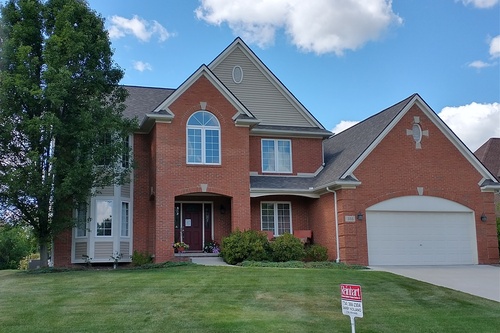Understanding Roof Ventilation: Improving Energy Efficiency

Does it feel like your AC runs for hours to cool your home?
Is the upper level of your home notably hotter than the rest?
One crucial yet often overlooked aspect of our homes is roof ventilation. Proper roof ventilation plays a big role in maintaining your home's energy efficiency and reducing your cooling and heating costs.
What is Roof Ventilation?
Roof ventilation is designed to allow air to circulate through your attic. This system typically includes intake vents (located at the eaves) and exhaust vents (placed near the roof ridge). The purpose of this ventilation is to create a flow of air that helps regulate temperature and moisture levels in the attic.
How Roof Ventilation Improves Energy Efficiency
1. Regulates Indoor Temperature
During the hot summer months, heat can accumulate in your attic, causing your home’s indoor temperature to rise. This fluctuation makes your air conditioning system work harder to maintain a comfortable temperature, increasing energy consumption. Proper roof ventilation allows hot air to escape, reducing the temperature in your attic and easing the load on your cooling system.
2. Prevents Moisture Build-up
In the winter, warm air from your living spaces can rise and enter the attic. If not properly ventilated, this warm air can condense on the cold surfaces of the attic, leading to moisture build-up. Excess moisture can cause damage to your roof structure, and insulation, and even promote mold growth. Effective ventilation helps expel this moist air, protecting your home and maintaining the efficiency of your insulation.
3. Extends Roof Lifespan
Proper ventilation can also prolong the life of your roof. Excessive heat and moisture can accelerate the deterioration of roofing materials. By ensuring a well-ventilated attic, you reduce the risk of damage caused by these elements, extending the lifespan of your roof and saving on costly repairs or replacements.
4. Reduces Energy Bills
By helping to regulate the temperature in your attic, roof ventilation reduces the strain on your HVAC system. This leads to lower energy consumption and, consequently, reduced energy bills. Investing in proper roof ventilation can lead to significant savings over time.
Signs of Poor Roof Ventilation
Understanding the signs of poor roof ventilation can help you take action before it affects your home's energy efficiency. Look out for:
- Uneven Temperature Distribution: If certain rooms are significantly hotter or colder than others, it might be due to poor attic ventilation.
- Excessive Attic Heat: In the summer, if your attic is excessively hot, it indicates inadequate ventilation.
- Moisture and Mold: Dampness, mold, or a musty odor in your attic are clear signs of poor ventilation.
Contact a Roofing Company in Ann Arbor to Improve Your Ventilation
Are you looking for ways to improve your home’s energy efficiency?
Our roofing company in Ann Arbor specializes in assessing and improving roof ventilation systems. Our experienced team can evaluate your current setup and recommend the best solutions to enhance your home's energy efficiency. Whether it's installing additional vents, repairing existing ones, or replacing your roof, we provide comprehensive services tailored to your needs.
For expert advice and quality roofing services, contact our team today!
